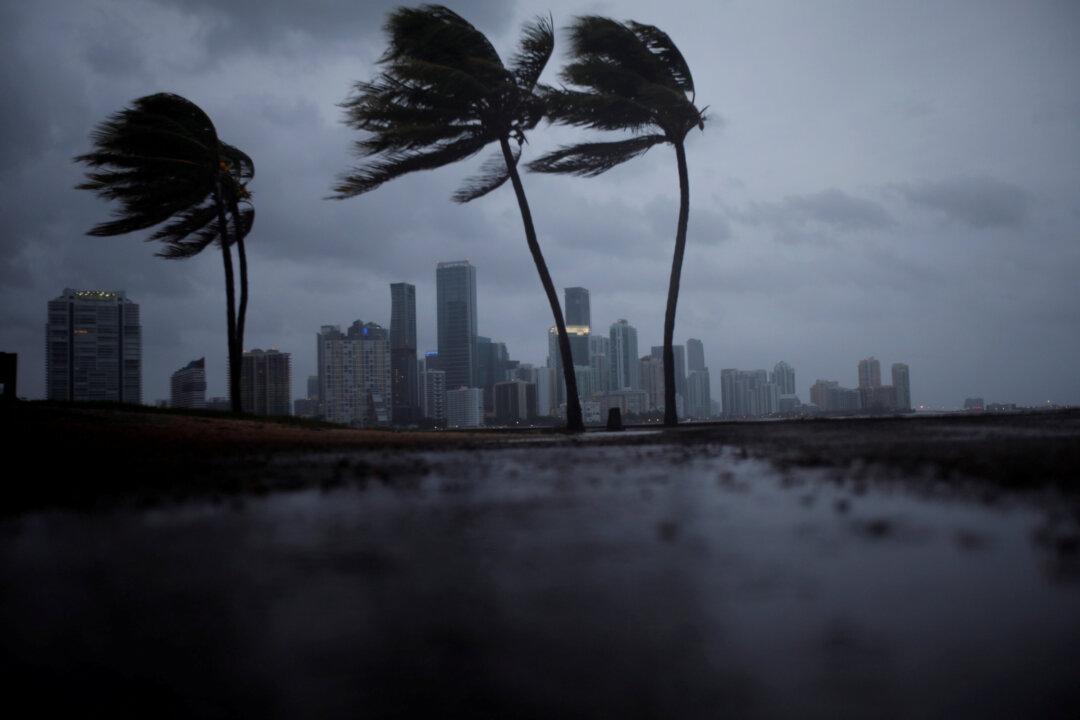FORT MYERS, Fla—Hurricane Irma gained strength as it was set to make landfall in Florida on Sunday with a double barrel threat of destructive winds and life-threatening storm surges, prompting one of the largest evacuations in U.S. history.
The storm, which went on a deadly march up Cuba’s northern coast a day earlier, was a Category 4 hurricane about 30 miles (50 kms) south-southeast of Key West, Florida, as of 6 a.m. EDT (1000 GMT) with maximum sustained winds of 130 mph (210 kph), the National Hurricane Center (NHC) said.





